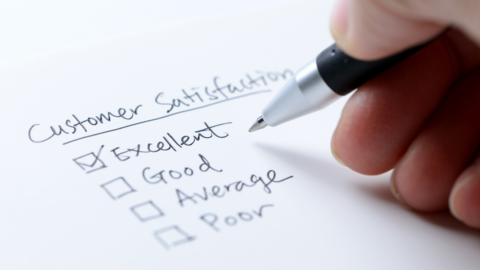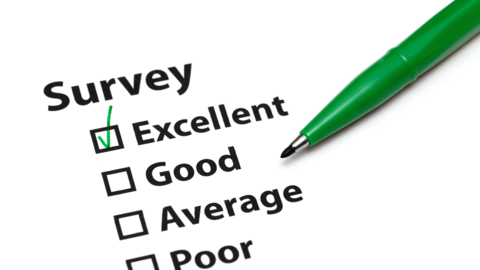Newsroom
- VADS
- Newsroom
- How to Measure Customer Satisfaction?
How to Measure Customer Satisfaction?
19 May 2023

What is Customer Satisfaction?
Customer satisfaction is the level of satisfaction, happiness, or emotional and functional satisfaction that is felt by customers after using the product or service of a brand or company. This is a subjective evaluation made by customers of the extent to which their expectations are met or even exceeded.
Customer satisfaction involves positive feelings, such as being satisfied, pleased, or fulfilled, which arise when customers feel that the product or service they receive meets their expectations or even exceeds these expectations. This can relate to aspects such as product quality, customer service, buying experience, price, reliability, convenience, or communication with a brand or company.
What Is the Importance of Measuring Customer Satisfaction?
1. Understand Customer Needs and Preferences: Measuring customer satisfaction helps in understanding customer needs, preferences, and expectations of your product or service. This allows companies to identify areas that need to be improved or adjusted to better meet customer expectations.
2. Improve Customer Retention: Measuring customer satisfaction helps in identifying customers who may be at high risk of experiencing churn or switching to competitors. By knowing their concerns or dissatisfaction, companies can take appropriate actions to fix problems and retain existing customers.
3. Increase Customer Loyalty: High customer satisfaction tends to have a positive impact on customer loyalty. By measuring customer satisfaction regularly, companies can identify their most satisfied customers and engage them in loyalty programs or activities that increase their loyalty.
4. Improve Customer Experience: By measuring customer satisfaction, companies can identify areas where the customer experience can be improved. By improving aspects that are important to customers, such as customer service, product quality, or process efficiency, companies can provide a more positive and satisfying customer experience.
5. Reduce New Customer Acquisition Costs: Having satisfied customers can help reduce new customer acquisition costs. Satisfied customers are more likely to maintain a relationship with your brand, make repeat purchases, and recommend the brand to others. This helps in reducing costs associated with marketing and promotional efforts to gain new customers.
6. Improve Brand Reputation: High customer satisfaction contributes to increasing brand reputation. Satisfied customers have a tendency to leave positive reviews, recommend brands to others, and share their experiences via social media or review platforms. This can enhance the overall brand image and reputation.
By regularly measuring customer satisfaction, companies can identify issues that need improvement, take appropriate actions to improve customer experience and build stronger long-term relationships with customers.
How to Measure Customer Satisfaction?
There are several methods that can be used to measure customer satisfaction. Here are some common ways to measure customer satisfaction:
1. Customer Satisfaction Survey:

Uses specially designed surveys to collect data on customer satisfaction. These surveys can take the form of a questionnaire that includes questions about various aspects of a product, service, or customer experience. Surveys can be sent by email, post, or taken online.
2. Customer Interviews:

Conduct face-to-face interviews with customers to get feedback on their satisfaction. This can be done through face-to-face interviews, telephone, or through online interviews.
3. Customer Feedback Analysis:

Conduct analysis on feedback provided by customers through various channels such as email, social media, or review platforms. Identify emerging feedback patterns and draw conclusions about customer satisfaction.
4. Customer Satisfaction Metrics:

Use specific metrics, such as Net Promoter Score (NPS), Customer Satisfaction Score (CSAT), or Customer Effort Score (CES), to measure customer satisfaction. These metrics are usually obtained through short surveys or single questions that ask customers to provide a rating of their level of satisfaction.
5. Data Analysis and Performance Metrics:

Use internal company data, such as customer retention rates, churn rates, or repeat sales data, to gain insight into customer satisfaction levels. Perform analysis to identify trends and patterns related to customer satisfaction.
6. Repeat Customer Evaluation:

Monitor the repeat purchase rate or retention rate of customers as an indicator of customer satisfaction. If a customer returns and makes repeated purchases, it can indicate a high level of satisfaction.
It is important to choose a measurement method that suits your type of business and customers. Combining several methods can provide a more comprehensive picture of customer satisfaction and assist in identifying areas that need improvement or improvement. PT VADS Indonesia can assist your company in increasing customer satisfaction with the various services we provide such as inbound contact center automation, outbound contact center automation, omnichannel, social media analytics, and other services that can be tailored to your company's needs. Discuss how to increase your company's customer satisfaction with us right now!
Related News
30 June 2025
20 June 2025
19 June 2025
27 May 2025
02 May 2025
17 April 2025
14 March 2025
07 March 2025
28 February 2025
18 February 2025
14 February 2025
11 February 2025
07 February 2025
28 January 2025
24 January 2025
21 January 2025
14 January 2025
07 January 2025
02 January 2025
30 December 2024
27 December 2024
17 December 2024
13 December 2024
10 December 2024
06 December 2024
03 December 2024
29 November 2024
19 November 2024
14 November 2024
08 November 2024
05 November 2024
01 November 2024
31 October 2024
25 October 2024
22 October 2024
18 October 2024
16 October 2024
11 October 2024
09 October 2024
08 October 2024
07 October 2024
27 September 2024
24 September 2024
20 September 2024
13 September 2024
10 September 2024
10 September 2024
06 September 2024
04 September 2024
02 September 2024
02 September 2024
09 August 2024
05 August 2024
26 July 2024
23 July 2024
02 July 2024
25 June 2024
18 June 2024
14 June 2024
06 June 2024
31 May 2024
24 May 2024
26 April 2024
02 April 2024
08 March 2024
05 March 2024
01 March 2024
29 February 2024
27 February 2024
23 February 2024
20 February 2024
16 February 2024
13 February 2024
09 February 2024
06 February 2024
02 February 2024
30 January 2024
26 January 2024
23 January 2024
19 January 2024
17 January 2024
12 January 2024
09 January 2024
05 January 2024
04 January 2024
29 December 2023
26 December 2023
20 December 2023
13 December 2023
08 December 2023
05 December 2023
28 November 2023
23 November 2023
17 November 2023
14 November 2023
09 November 2023
08 November 2023
01 November 2023
24 October 2023
17 October 2023
17 October 2023
11 October 2023
10 October 2023
06 October 2023
04 October 2023
29 September 2023
27 September 2023
26 September 2023
22 September 2023
21 September 2023
15 September 2023
08 September 2023
01 September 2023
22 August 2023
18 August 2023
15 August 2023
15 August 2023
04 August 2023
26 July 2023
21 July 2023
04 July 2023
03 July 2023
30 June 2023
09 June 2023
01 June 2023
30 May 2023
26 May 2023
17 May 2023
12 May 2023
04 April 2023
16 March 2023
09 March 2023
24 February 2023
22 February 2023
14 February 2023
13 February 2023
09 February 2023
31 January 2023
26 January 2023
23 January 2023
19 January 2023
12 January 2023
10 January 2023
06 December 2022
31 August 2022
17 June 2022
09 May 2022
20 April 2022
06 April 2022
01 April 2022
25 February 2022
23 February 2022
21 February 2022
18 February 2022
15 February 2022
11 February 2022
08 February 2022
07 February 2022
04 February 2022
02 February 2022
31 January 2022
17 January 2022
14 January 2022
07 January 2022
03 January 2022
28 December 2021
07 December 2021
01 November 2021
27 October 2021
25 October 2021
18 October 2021
15 October 2021
14 October 2021
21 September 2021
22 April 2021
15 April 2021
13 April 2021
08 April 2021
05 April 2021
26 March 2021
23 March 2021
18 March 2021
15 March 2021
12 March 2021
09 March 2021
04 March 2021
02 March 2021
26 February 2021
23 February 2021
19 February 2021
16 February 2021
11 February 2021
09 February 2021
04 February 2021
02 February 2021
26 January 2021
21 January 2021
19 January 2021
14 January 2021
12 January 2021
07 January 2021
05 January 2021
29 December 2020
17 December 2020
15 December 2020
10 December 2020
08 December 2020
04 December 2020
02 December 2020
18 November 2020
16 November 2020
13 November 2020
11 November 2020
10 November 2020
09 November 2020
06 November 2020
04 November 2020
28 October 2020
23 October 2020
12 October 2020
09 October 2020
06 October 2020
02 October 2020
30 September 2020
23 September 2020
19 September 2020
26 August 2020
22 July 2020
23 April 2020
16 April 2020
09 April 2020
26 March 2020
19 March 2020
12 March 2020
05 March 2020
27 February 2020
20 February 2020
13 February 2020
06 February 2020
